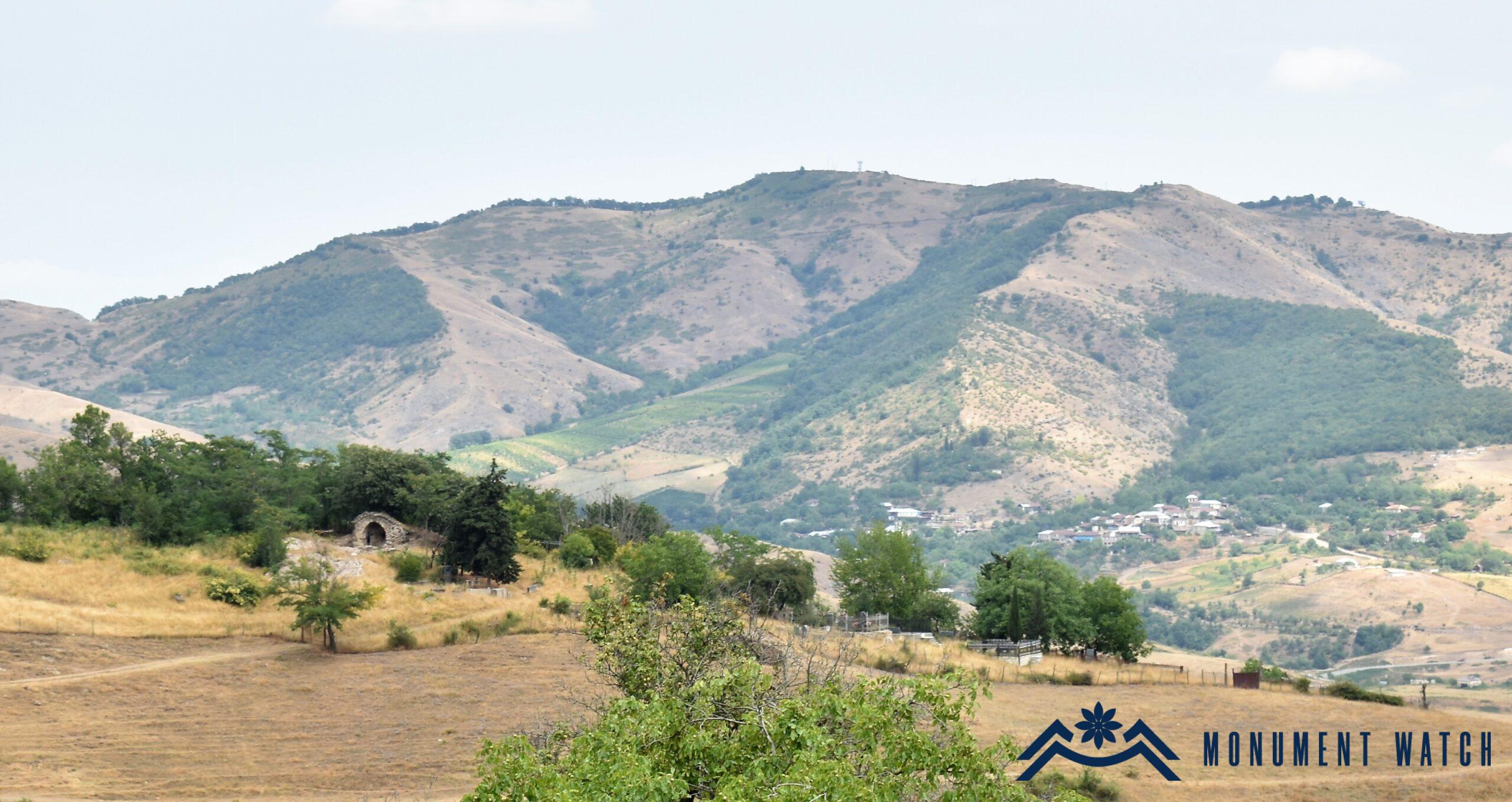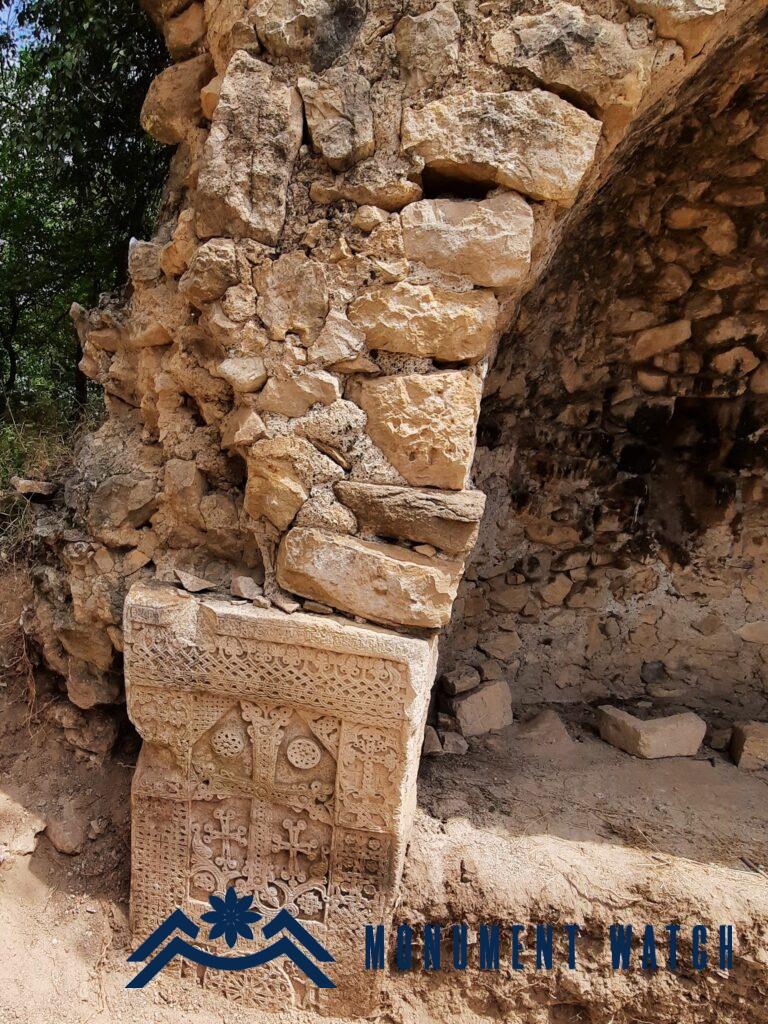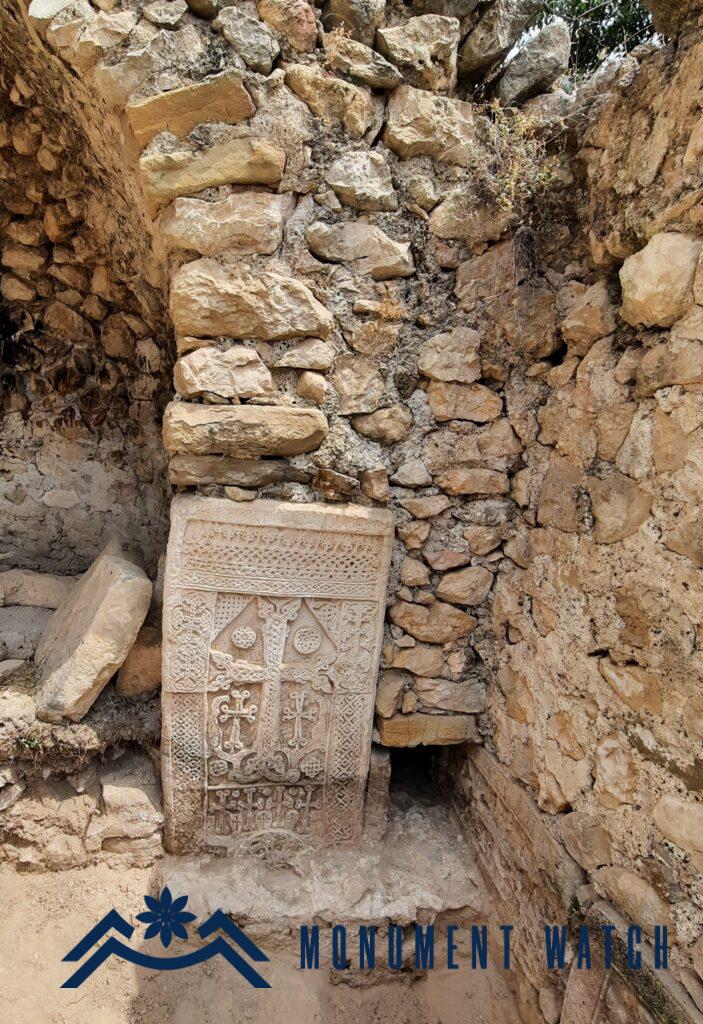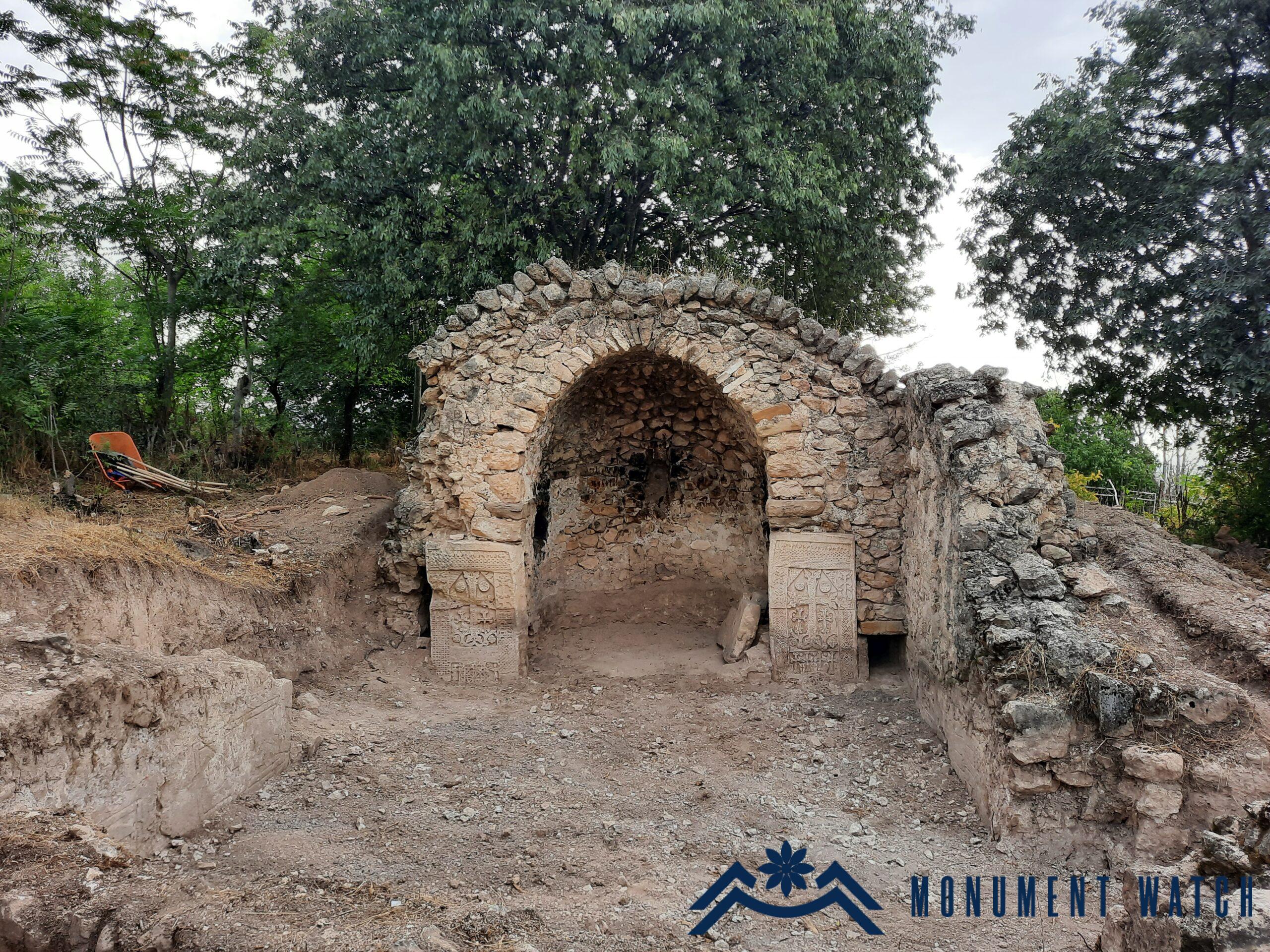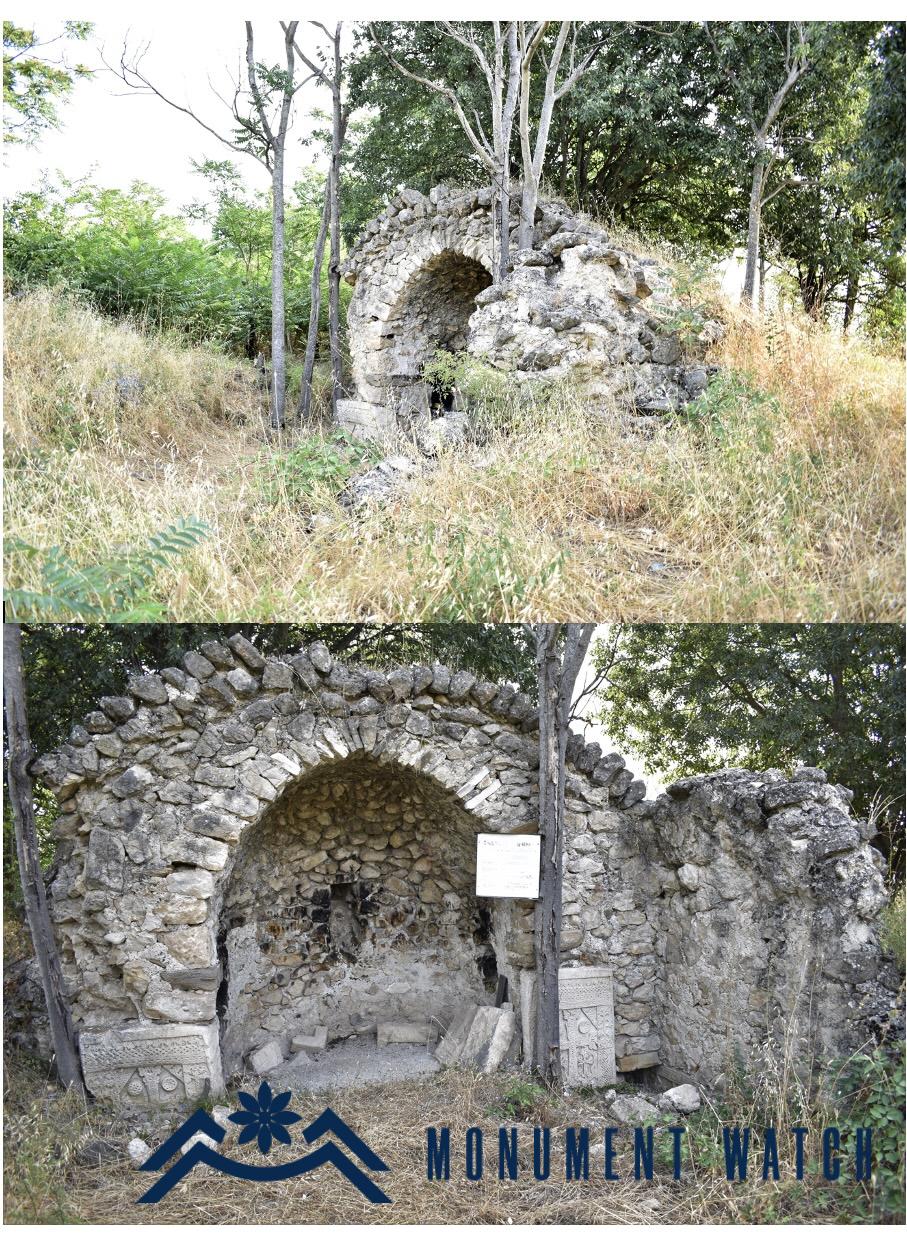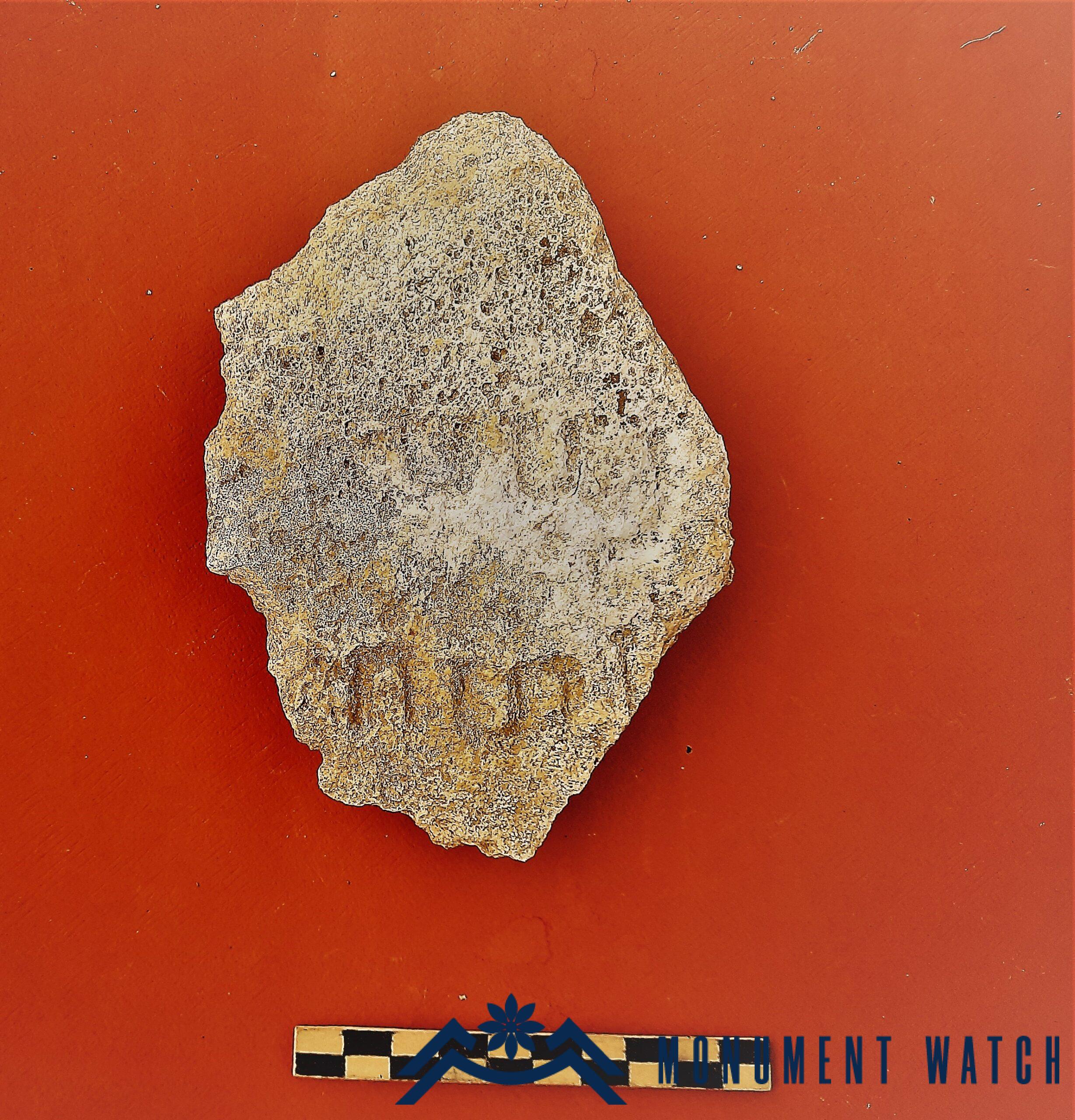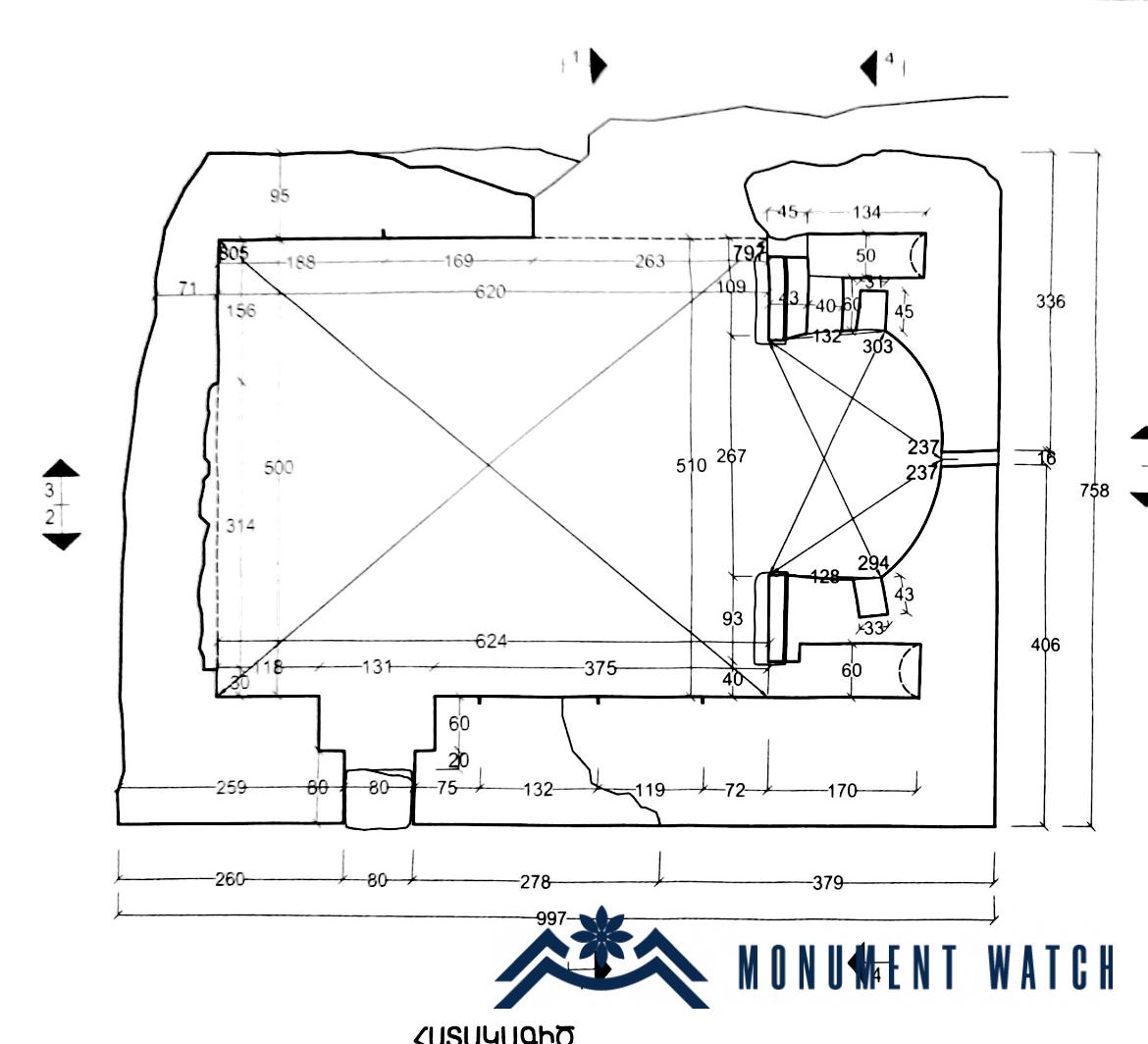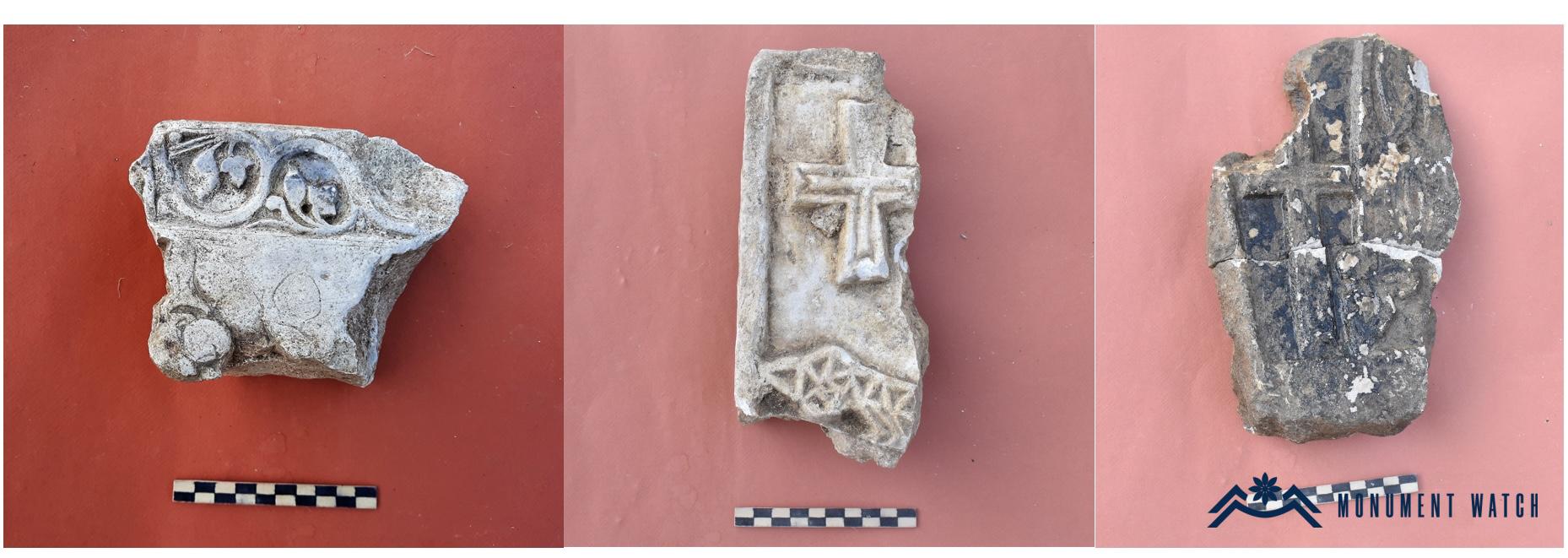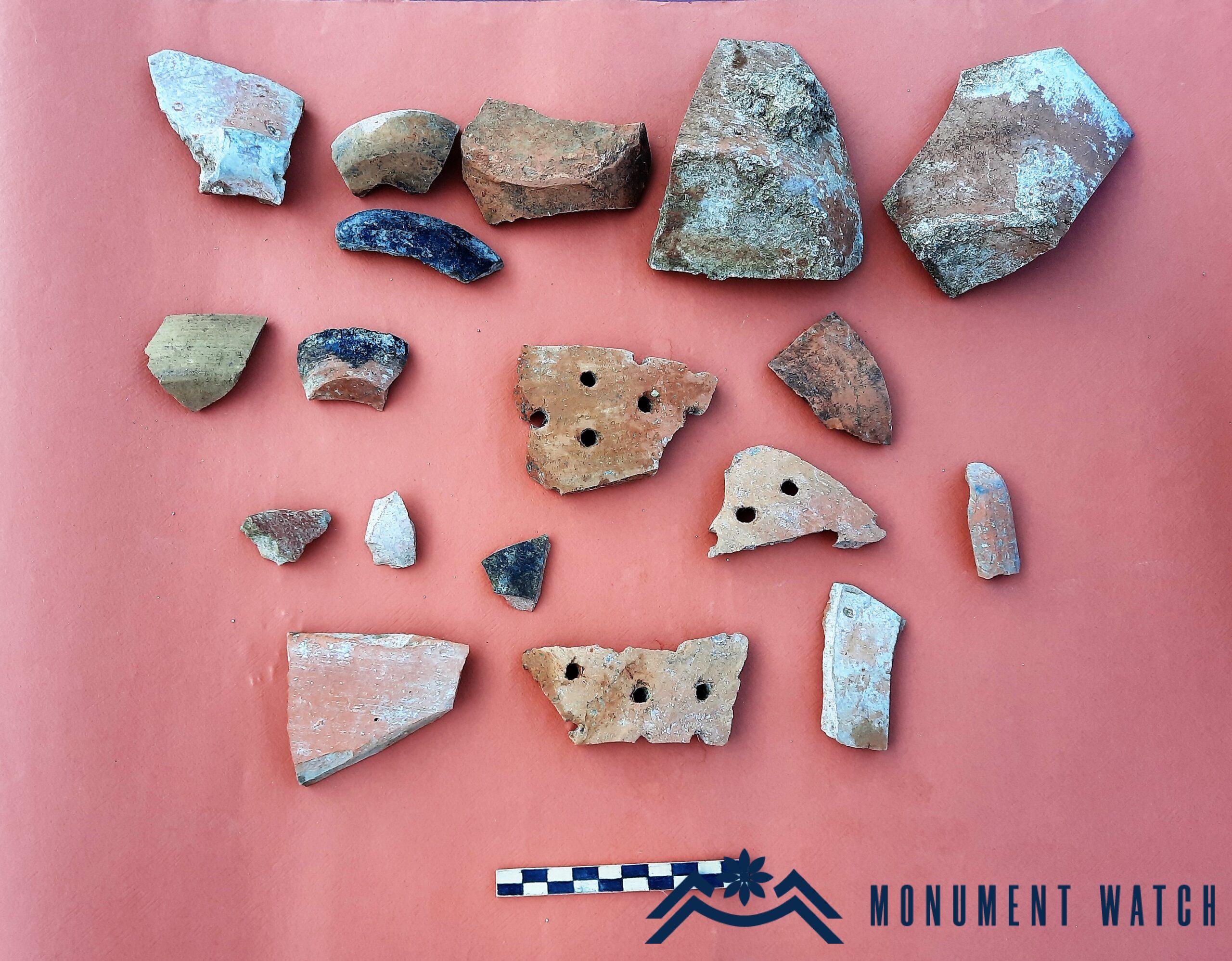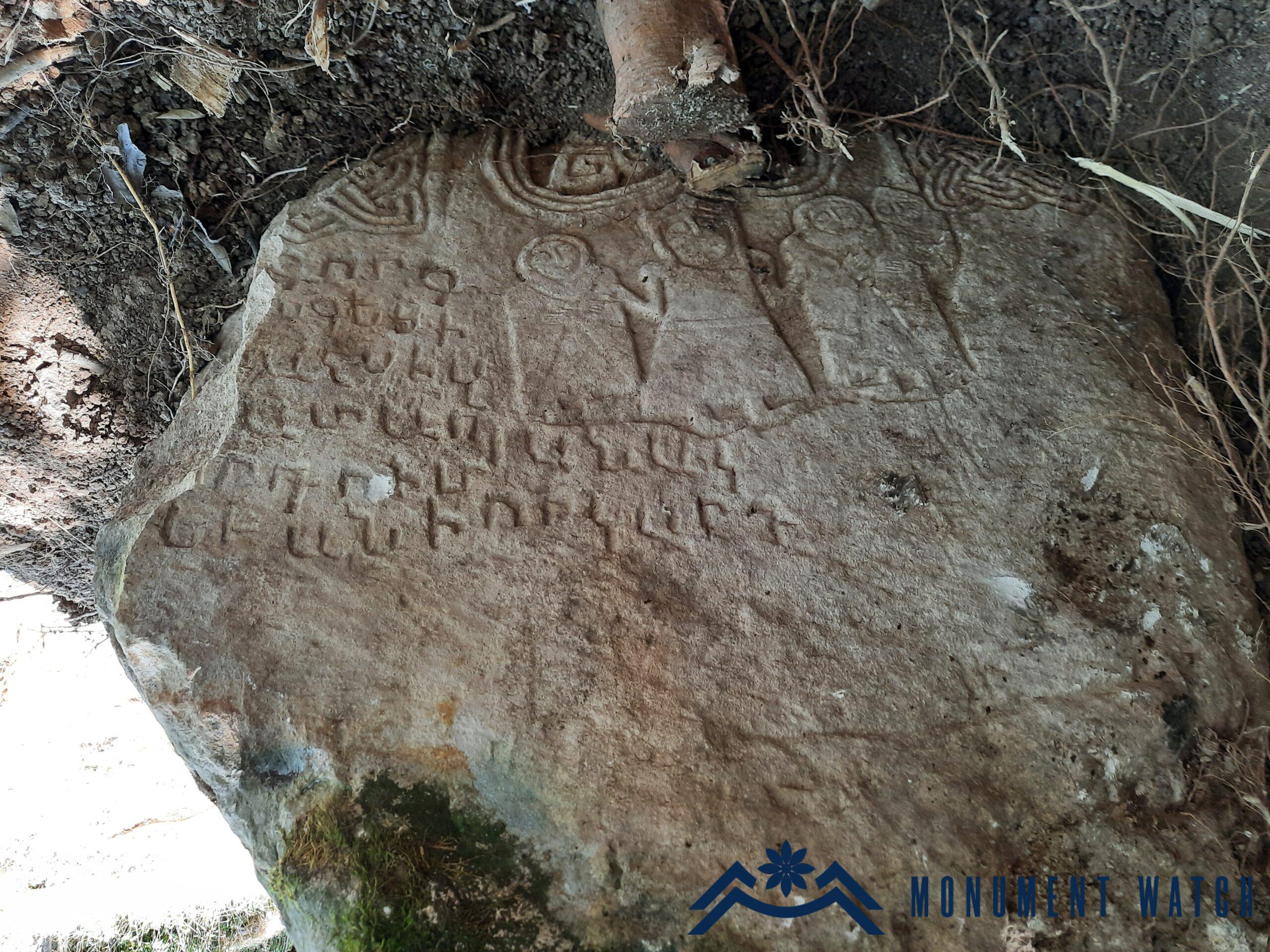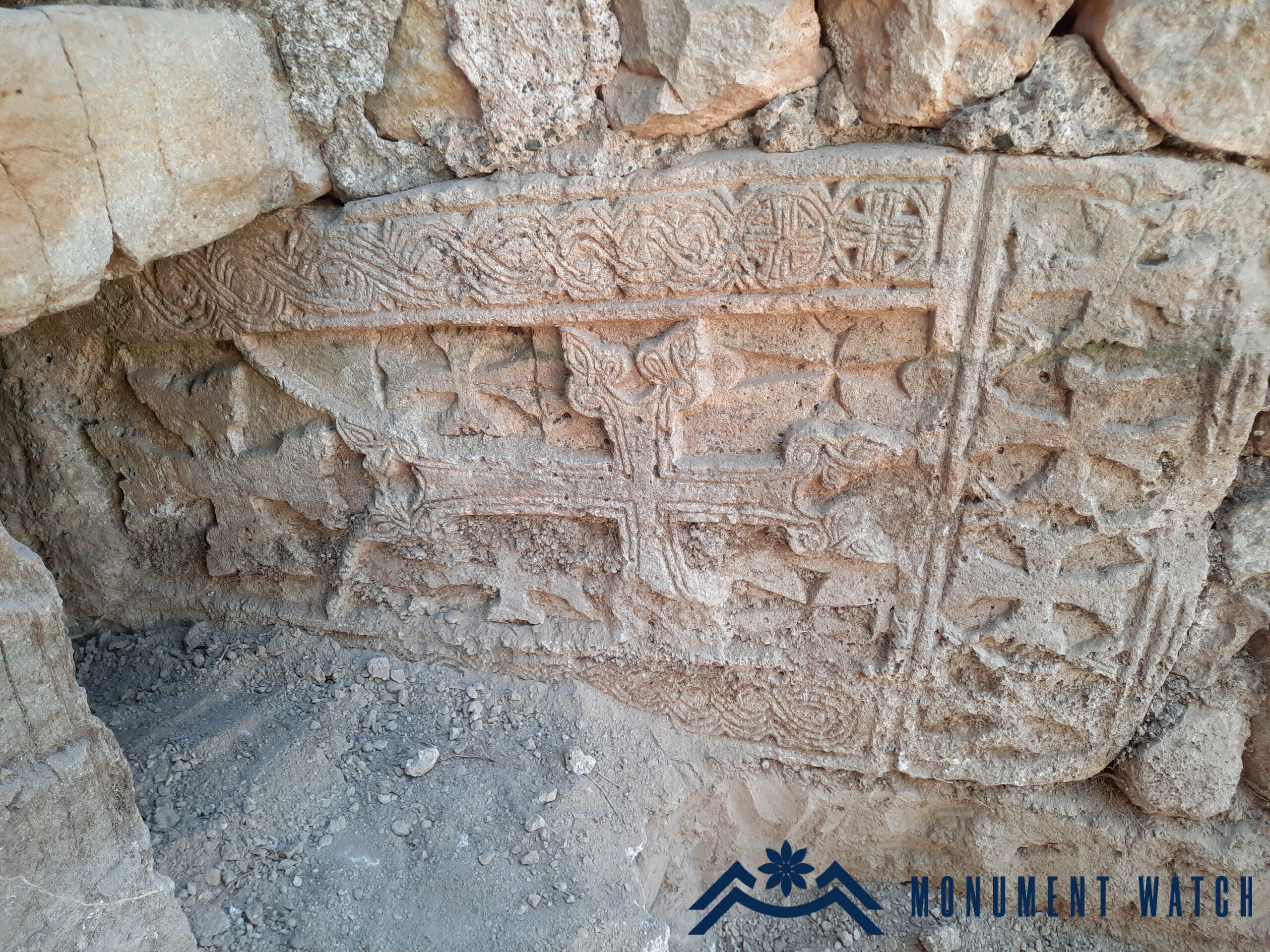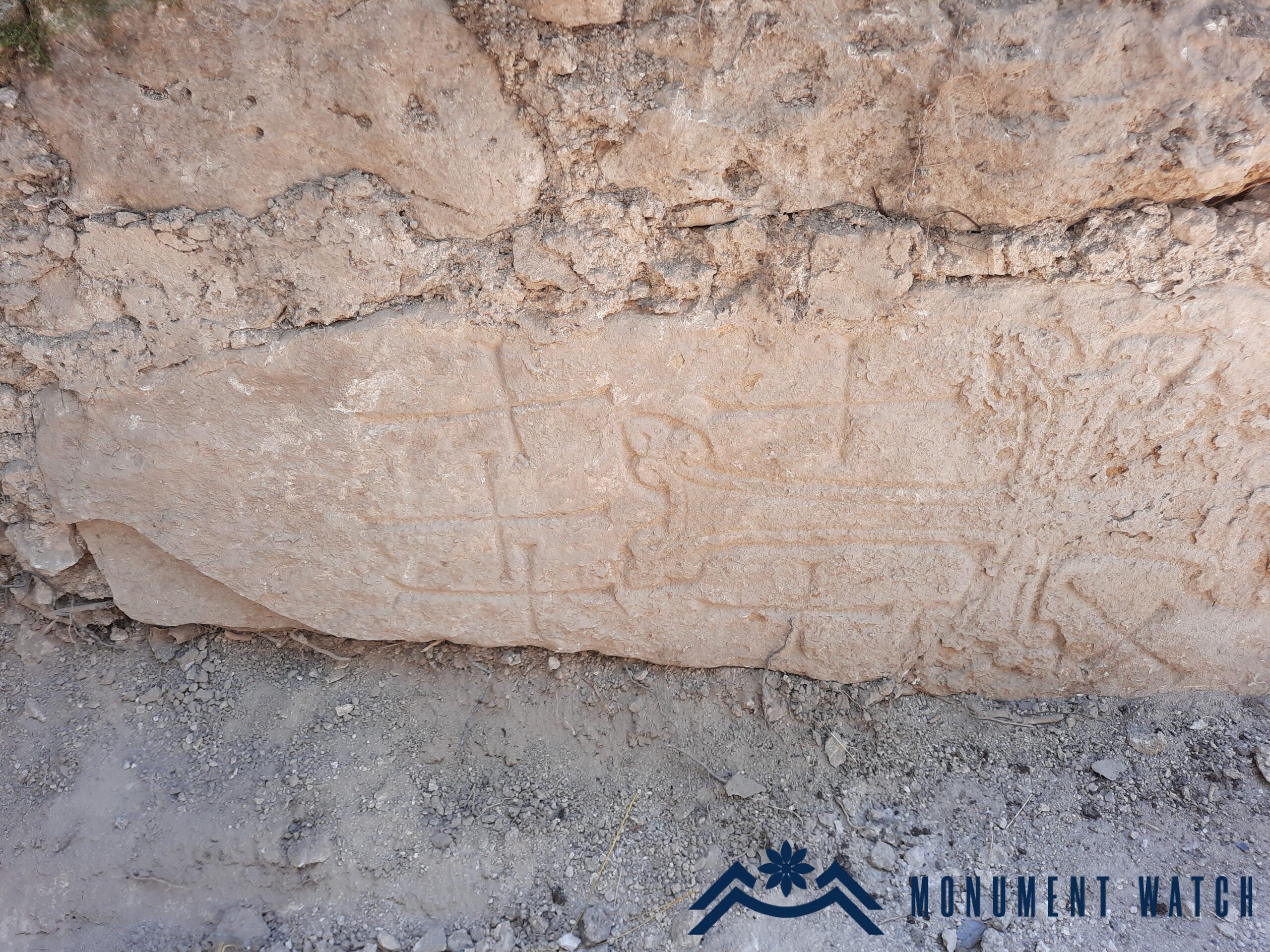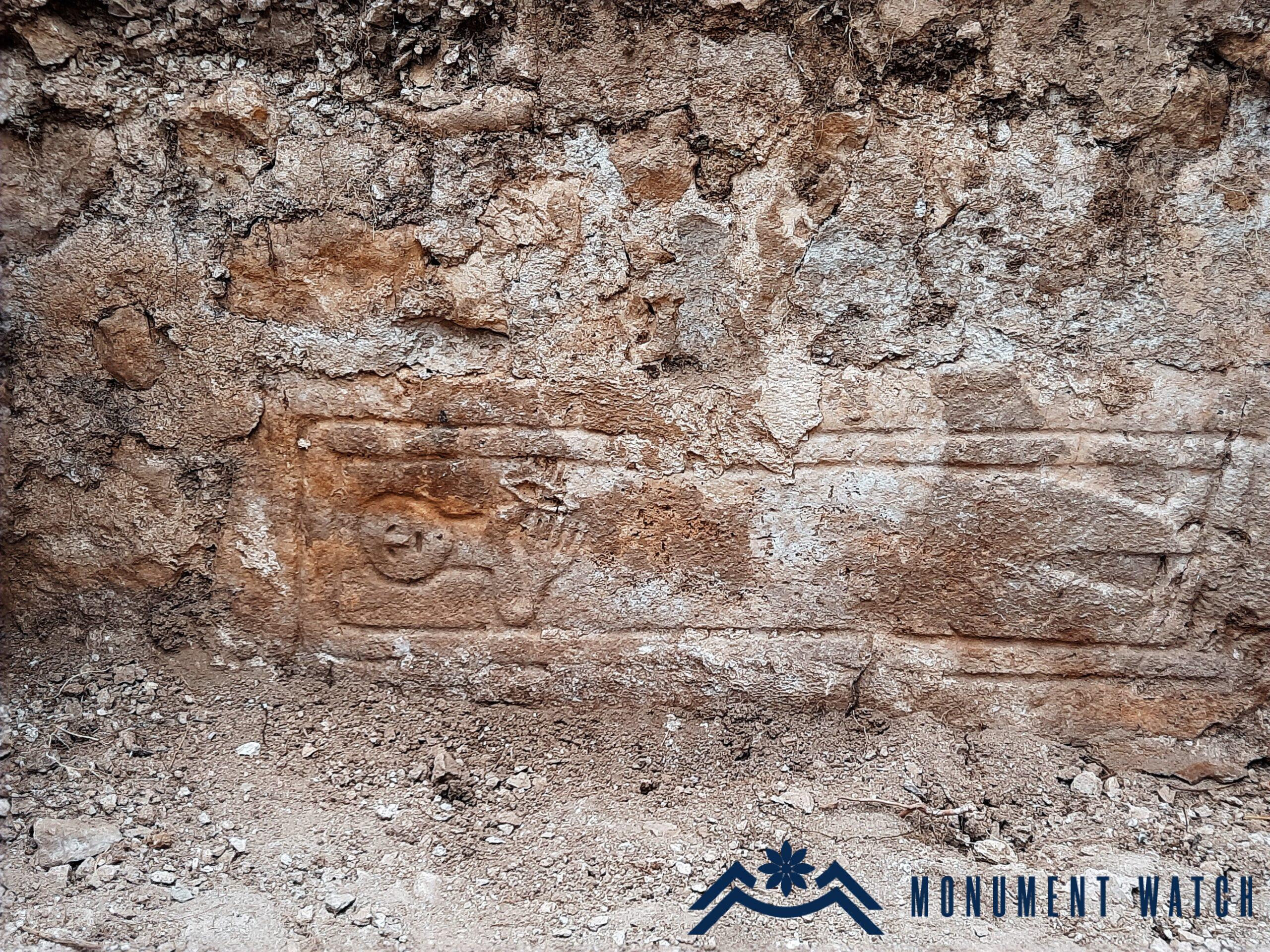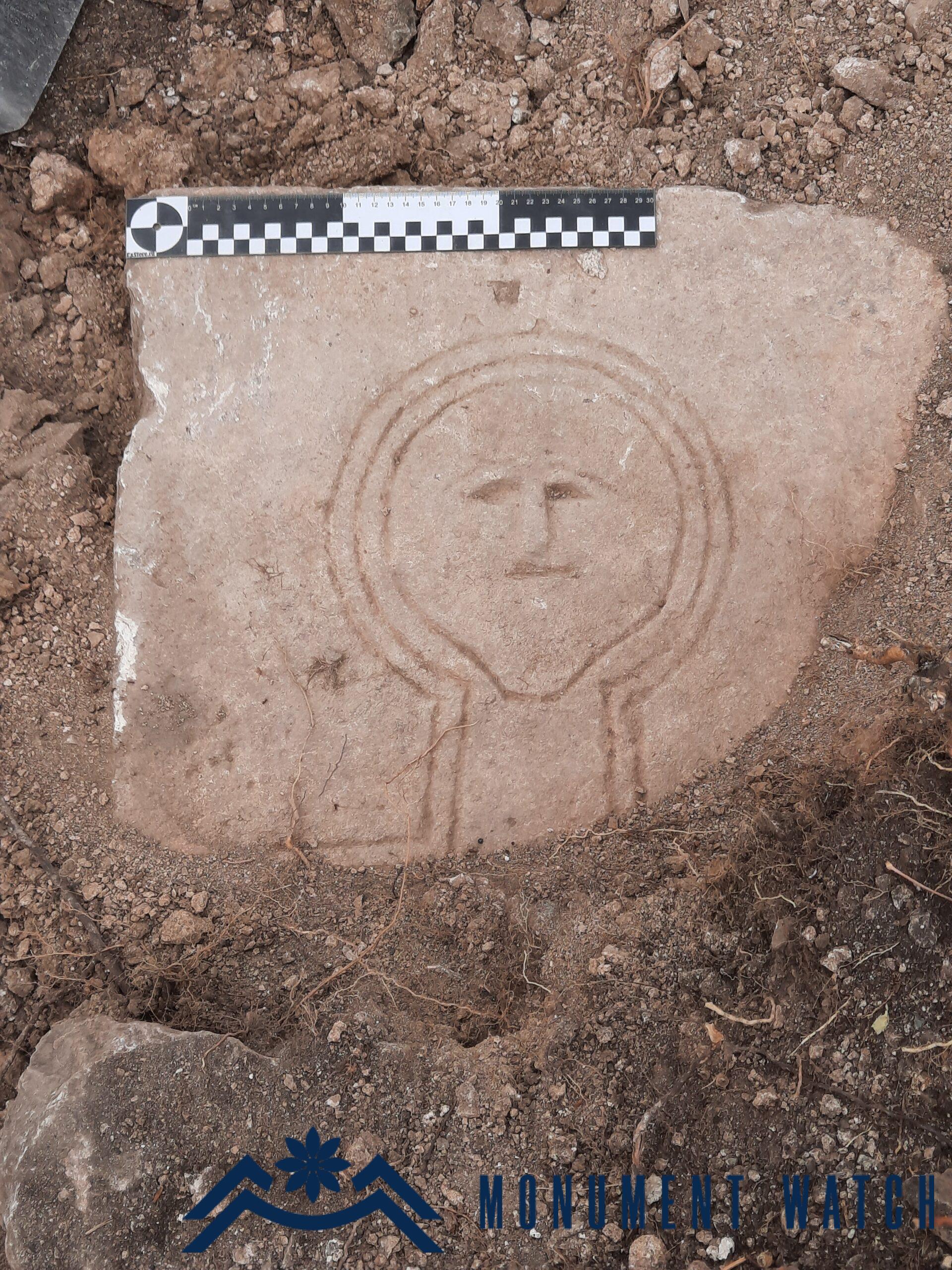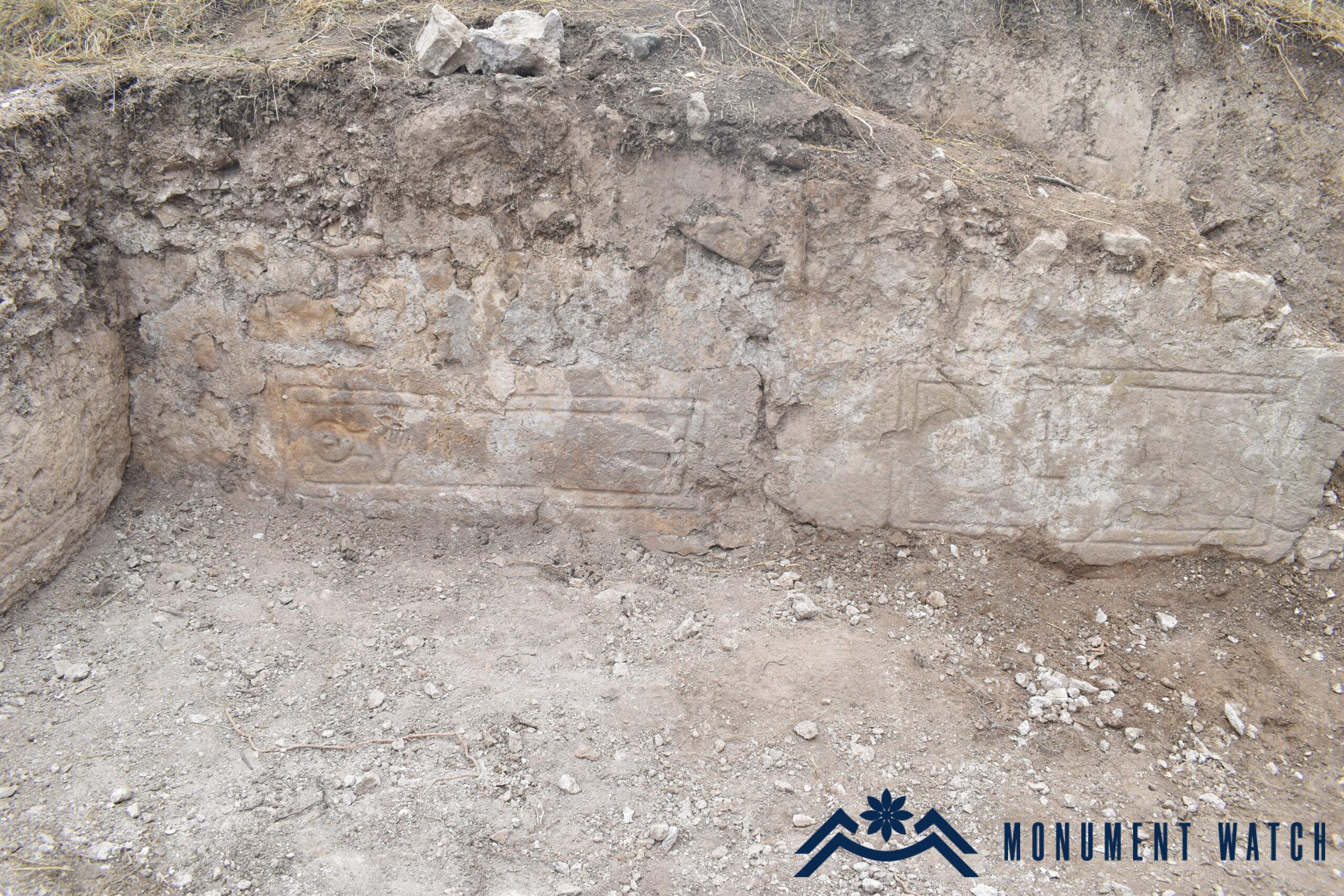New information about the Karmir (red) Church of Tsovategh village
Location
The Karmir Church complex, also known as Melik Pashayan's mausoleum, is situated on the eastern side of Tsovategh village in the Martuni region of the Republic of Artsakh. It is positioned within the area of the old cemetery, atop a hill (Fig. 1).
Following September 19, 2023, the village fell under Azerbaijani occupation.
Our website has already showcased this interesting monument (https://monumentwatch.org/en/monument/the-karmir-red-church-mausoleum-of-melik-pashayans/).
The current investigation, considering the excavation works conducted at the monument, reveals new circumstances.
Historical overview
Information about the monument has been documented in the works of Sargis Jalalyants, Makar Barkhudaryants, and Yervand Lalayan (Jalalyants, 1858, pp. 333-334; Barkhudaryants, 1895, pp. 106-107; Lalayan, 1897, 49-50).
According to Jalalyants, "On the eastern side of the village of Tsovategh, atop a small hill, lies a cluster of graves, within which stands a four-chambered, vaulted church. Three chambers are subterranean, while one protrudes halfway above the ground surface...thus, these chambers contain the tombs of numerous meliks, including those of Melik Pasha and Bishop Sahak" (Jalaleants 1858, 333).
According to Makar Bishop Barkhudaryants, "the mausoleum of Melik Pashayants, situated not far from the eastern side of the village on a hill, bears this name. Surrounding the mausoleum are densely clustered graves, some adorned with crosses on tombstones dating back to ancient times. The mausoleum itself is subterranean and comprises four chapels: the first being large, the second medium-sized, and the third serving as a church, and the fourth a small chapel. These chapels are interconnected by cross doors, facilitating passage between them. The first large chapel has suffered damage from a vertical crack, with only remnants of its southern wall and door visible, as all chapels are located underground" (Barkhutareants 1895, 107).
Therefore, while Sargis Jalalyants mentions a four-apse church, with only one apse partially above ground and the remaining three below, Makar Barkhudaryants describes the Tomb as underground, comprising four chapels. The first is large, followed by two medium-sized chapels, and the fourth, is a small chapel. Additionally, the first chapel serves as a church in Barkhudaryants' account.
The inscription detailing the construction of the church was not found on-site. However, both Sargis Jalalyants and Makar Barkhudaryants reported seeing it previously. Sargis Jalalyants records: "At the church door, in the year (955), I, Bishop Petros, built this church [and] this monastery as a memorial, [designating] it to be the tomb and burial site of our forefathers "(Jalaleants 1858, 333). In essence, according to Sargis Jalalyants, the church was constructed in 1506 by Bishop Petros. However, Makar Barkhudaryants provides a different account, stating that the church was built in 1621 by Bishop Davit. "In 1621, Bishop David. It is a memorial to my church and monastery, designating it as the tomb and burial site of our ancestors" (Barkhudaryants 1895, 108). Yervand Lalayan echoes Barkhudaryants's account precisely (Lalayan 1897, 149). Therefore, Makar Barkhudaryants and Yervand Lalayan both indicate 1621 as the year of the church's construction.
It's worth noting that the inscriptions on the khachkars situated on the north and south sides of the church's tabernacle bear the dates 1576 and 1586 (Figs. 2, 3).
Architectural-compositional examination
The Karmir Church is a single-nave vaulted structure with a semicircular tabernacle (Figs. 4, 5). The sole entrance to the church is located on the southern side.
A small inward-widening window is still intact in the eastern section of the tabernacle.
The Tsovadegh church was constructed using rough stones.
The results of archaeological excavations
The entire interior of the church hall is covered with a layer of stone and earth, measuring 0.50-0.80 meters in thickness, beneath which lies a layer of pure clay.
The Karmir Church was overgrown with vegetation and in a state of ruin (Figs. 6, 7). In 2022, excavation and cleaning operations were conducted at the site, led by Archaeological Expedition Leader Vardges Safaryan and architect Manvel Sargsyan.
The primary objective of the archaeological excavations was to locate the mausoleum associated with the Melik Pashayans; however, no corresponding tombs were discovered. Instead, various artifacts were unearthed, including fragments of khachkars from different periods (Fig. 7), inscription stones (Fig. 8), fragments of shells, parts of roof slabs, and two additional fragments of khachkars (Fig. 9).
Of particular interest is the inner part of the khachkar, dating from the 12th to 13th centuries, which was integrated as a building stone in the northeast corner of the main tabernacle of the church. It depicts the theme of a "family portrait," a motif commonly found in Artsakh khachkars of that period, where the deceased is depicted alongside relatives. Despite some damage to the inscription, most of the text is still legible: "I, Gevorg, raised this cross on the tomb of my son, Tevan. When you read it, remember him in your prayers" (Fig. 10).
In the southern wall of the church, additional khachkars from the 12th-13th centuries are horizontally embedded (Figs. 11, 12), and tombstones were repurposed as building materials in the northern and western walls (Figs. 13-15).
The khachkars positioned in the southern and northern sections of the tabernacle are affixed with lime mortar, with the lower decorative elements of the khachkars remaining partially covered by the mortar.
Taking into account the possibility that the tomb chapel described by M. Barkhudaryants might be situated beneath the southern sacristy, exploratory drilling was conducted in the frontal section of the southern khachkar. Despite no indications of a chapel being detected, a ground burial lacking a coffin was uncovered. The orientation of the deceased is from west to east, with folded hands resting on the stomach.
After clearing the hall, a tombstone was uncovered on the northern wall. Interestingly, another burial was found outside the wall, parallel to the southern one. This discovery weakens the hypothesis that the church chapel was constructed on an old cemetery, where tombstones were repurposed for the new structure.
Thanks to the excavation, the monument was cleaned and it became sightworthy. The cleaning work also made it possible to measure the church accurately.
Bibliography
- Jalalyants 1858 - Jalalyants S․, Journey to Greater Armenia, part B, Tiflis.
- Barkhutareants 1895 - Makar Bishop Barkhutareants, Artsakh, printing house "Aror", Baku.
- Mkrtchyan 1980 - Mkrtchyan Sh., Historical and Architectural Monuments of Nagorno-Karabakh, "Hayastan" Publishing House, Yerevan.
New information about the Karmir (red) Church of Tsovategh village
Artsakh

